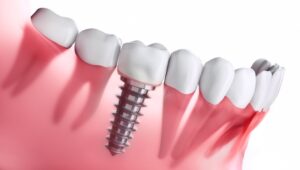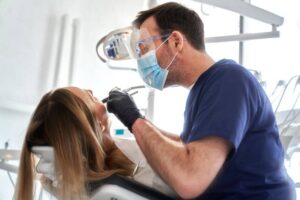Modern dental clinics have gone through significant transformations due to advancements in technology. Gone are the days of simple drills and basic X-Ray machines. Today’s dental practices are equipped with state-of-the-art technology designed to enhance patient care and streamline processes for dentists and their teams. Let’s take a closer look at how technology plays a crucial role in these transformations, making dentistry more efficient and patient-friendly.
Directly Addressing Technology in Dental Clinics
Technology in dental clinics serves as the backbone for enhancing patient experiences and improving treatment efficiency. It helps dentists provide more accurate diagnostics and advanced procedures, ensuring better patient outcomes. With digital imaging, dentists can diagnose problems without invasive procedures. This advancement reduces patient anxiety and treatment time, allowing for more efficient visits.
Moreover, technology has paved the way for innovative treatments such as laser dentistry and 3D printing. Laser technology minimizes discomfort and speeds up recovery by reducing the need for sutures and anesthesia. On the other hand, 3D printing offers custom solutions for crowns and dentures, fitting patients perfectly and allowing for quicker replacements.
Enhancing Patient Experience
-
Comfort and Efficiency: Technology ensures that dental visits are more comfortable and less time-consuming. Patients can avoid long waiting times and receive more efficient treatments.
-
Minimized Pain: Advancements such as laser therapy reduce pain and swelling, leading to more pleasant dental procedures.
-
Better Scheduling: Digital scheduling tools allow more flexible and convenient appointments, making it easier for patients to plan visits.
Improved Diagnostics and Treatment
Advanced technology has transformed diagnostic capabilities in dental clinics. Digital X-rays provide clear images with less radiation exposure, making them safer for patients. Moreover, digital impressions reduce the need for traditional molding, which is uncomfortable for many.
These tools allow dentists to detect issues early and provide more effective treatments. For instance, early detection of cavities or gum disease can prevent more severe conditions from developing.
Advanced Technologies in Dentistry
The use of artificial intelligence (AI) in dentistry is becoming more common, offering smart solutions for diagnosis and treatment planning. AI can analyze patterns in patient data, providing dentists with insights that enhance decision-making. This technology helps tailor personalized treatment plans, leading to higher success rates.
-
Intraoral Cameras: These cameras provide detailed views of the patient’s mouth, allowing for better communication and understanding between the dentist and the patient.
-
Digital Impressions: This technology eliminates the need for traditional molds, enabling quicker and more accurate fittings for dental appliances.
-
3D Imaging: 3D imaging offers comprehensive views, aiding in precise planning for dental surgeries and implants.
Impact on Dental Treatments
Technology not only benefits patients but also streamlines operations for dental practitioners. With advanced equipment and software, clinics can handle administrative tasks more effectively, such as scheduling, billing, and record-keeping.
These innovations ensure higher standards of care, making it easier for clinics to adapt to the growing needs of patients. Whether it’s routine cleanings or dental treatments in Dallas, technology supports every aspect of dental care.
Future of Technology in Dentistry
The dental industry continues to evolve as new technologies emerge. Virtual reality (VR) is being explored for educational purposes, offering virtual simulations for students and professionals alike. VR can also assist in patient education, helping them understand procedures and outcomes through immersive experiences. On the horizon are developments like tele-dentistry, which can connect patients and dentists remotely, expanding access to care, especially in underserved areas.
As technology advances, orthodontic solutions are also improving, with innovations in clear aligners like the best Invisalign Dallas options, offering patients more effective and convenient treatment plans. We can expect these integrated solutions to further enhance patient care and clinic efficiency.
Challenges and Considerations
While technology offers many benefits, it also presents challenges. One major concern is the cost of implementing and maintaining advanced equipment, which could increase the overhead for dental clinics. Training staff to use new tools effectively is another challenge, requiring time and resources.
Data security is a critical consideration, as patient records must be protected against breaches. Clinics need to invest in secure systems and regular updates to safeguard patient privacy. Despite these challenges, the advantages of technology in dental clinics far outweigh the drawbacks, leading to more effective and pleasant patient experiences.
Patient Education and Engagement
Technology in dental clinics also plays a significant role in educating patients. Interactive displays and digital models help patients understand their conditions and treatment options better. This understanding empowers them to make informed decisions about their oral health care.
Patients are more engaged when they understand the benefits of different treatments, such as the stability provided by effective bone grafting treatment Dallas, particularly for dental implants. By using technology to provide clearer insights and choices, dental practitioners can build stronger relationships with their patients.
Adapting to Technological Advancements
Dental clinics must stay informed about the latest technological advancements to remain competitive and provide the best care. Continuous education and investment in new tools are necessary to adapt to changes in the dental field.
-
Staff Training: Clinics should prioritize ongoing training for staff to ensure proficiency with new technologies.
-
Patient-Centric Approach: Upholding a patient-first approach, technology should enhance, not complicate, the patient experience.
Final Thoughts
The role of technology in modern dental clinics is undeniable. It improves diagnostics, treatment, and patient experience, making dental visits more pleasant and effective. While challenges exist, advancements in technology offer solutions that benefit both patients and dental practitioners. By staying updated on new technologies and integrating them effectively, clinics can provide superior care, enhancing patient satisfaction and outcomes. Whether you’re a patient or a dental professional, embracing these advancements is key to thriving in modern dentistry.




